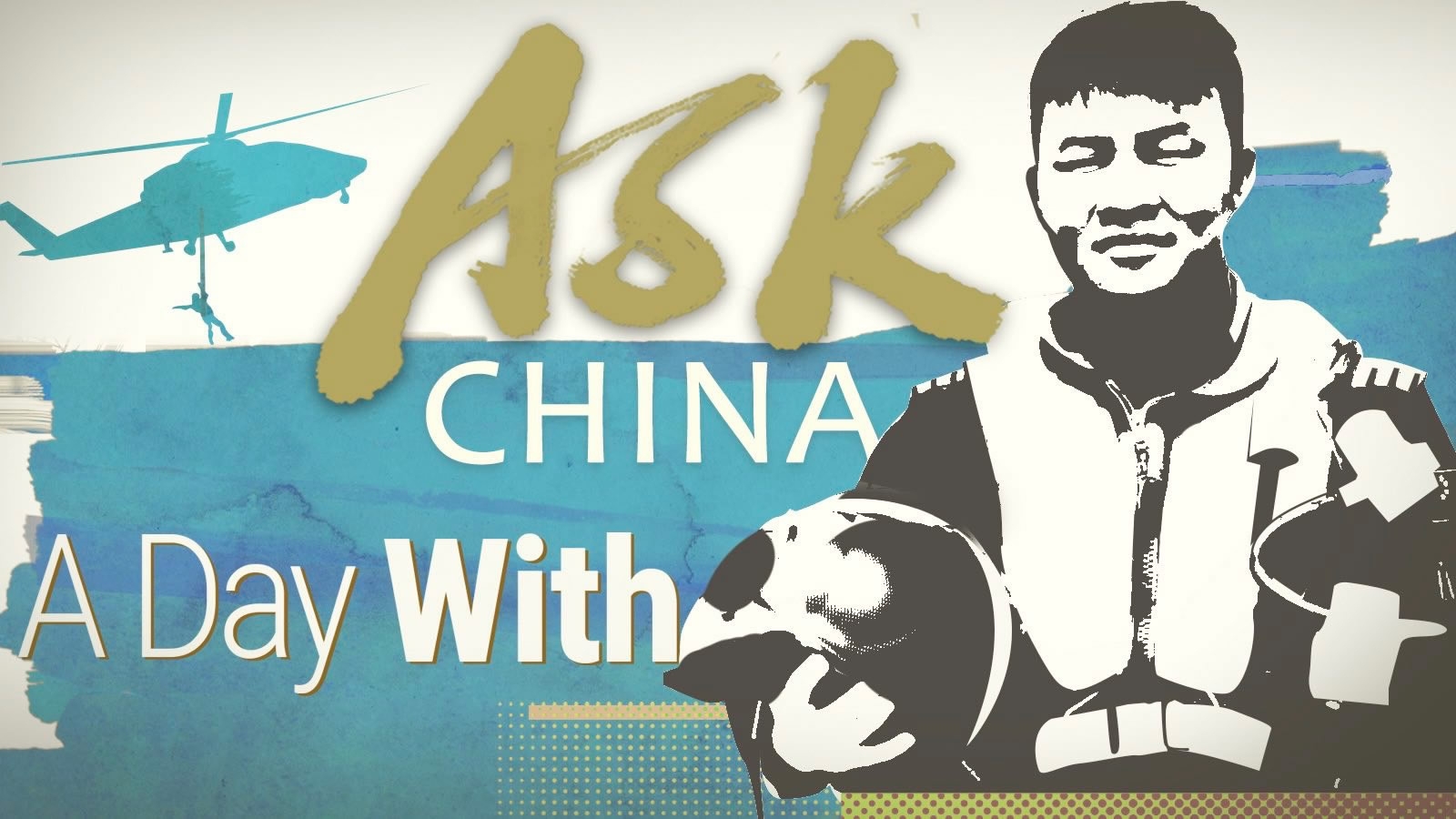Soaring to an altitude of 6,000 meters could either send chills down your spine or fuel an adrenaline rush. But for Yin Pengxiang, it’s just another day at work, which sees the 28-year-old putting his own life in danger and braving, at times, unsafe traveling conditions to help those running out of luck and time.
Yin is a search and rescue pilot working with the Donghai (East China Sea) Rescue Bureau of the Ministry of Transport, who is based in the coastal city of Xiamen in southeast China’s Fujian Province.
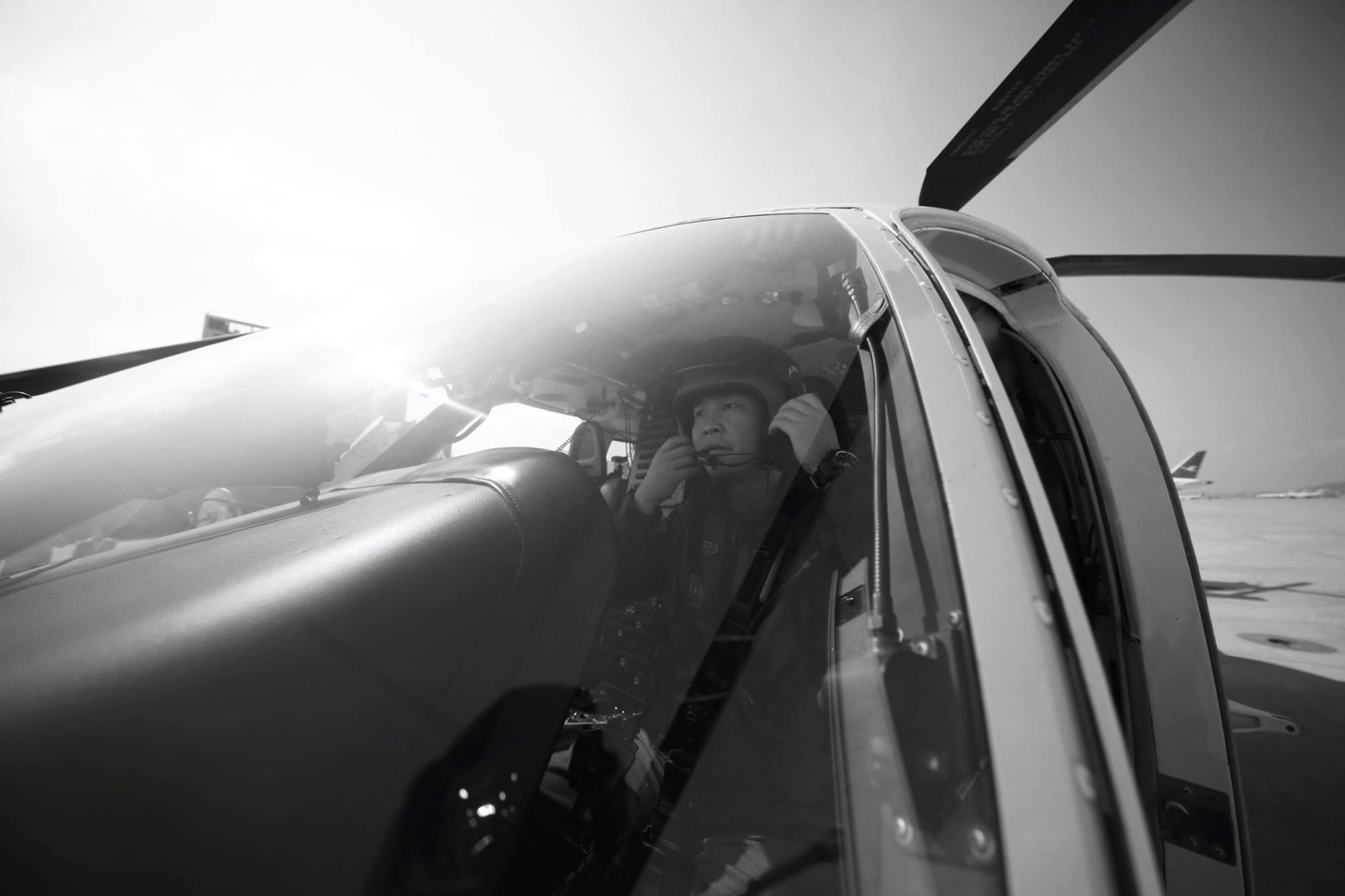
Yin Pengxiang in the cabin during an offshore rehearsal. /CGTN Photo
Yin Pengxiang in the cabin during an offshore rehearsal. /CGTN Photo
Since 2011, Yin has led a life of unparalleled excitement and adventure that could be the envy of many of his peers. CGTN spent a day with the young man to see how heroic rescue scenes seen in movies play out in real life.
A typical day starts with routine offshore rehearsals, which help better prepare the rescue team for the moment when real-life perils or disasters strike and enable responders to be efficient and ready under any condition.
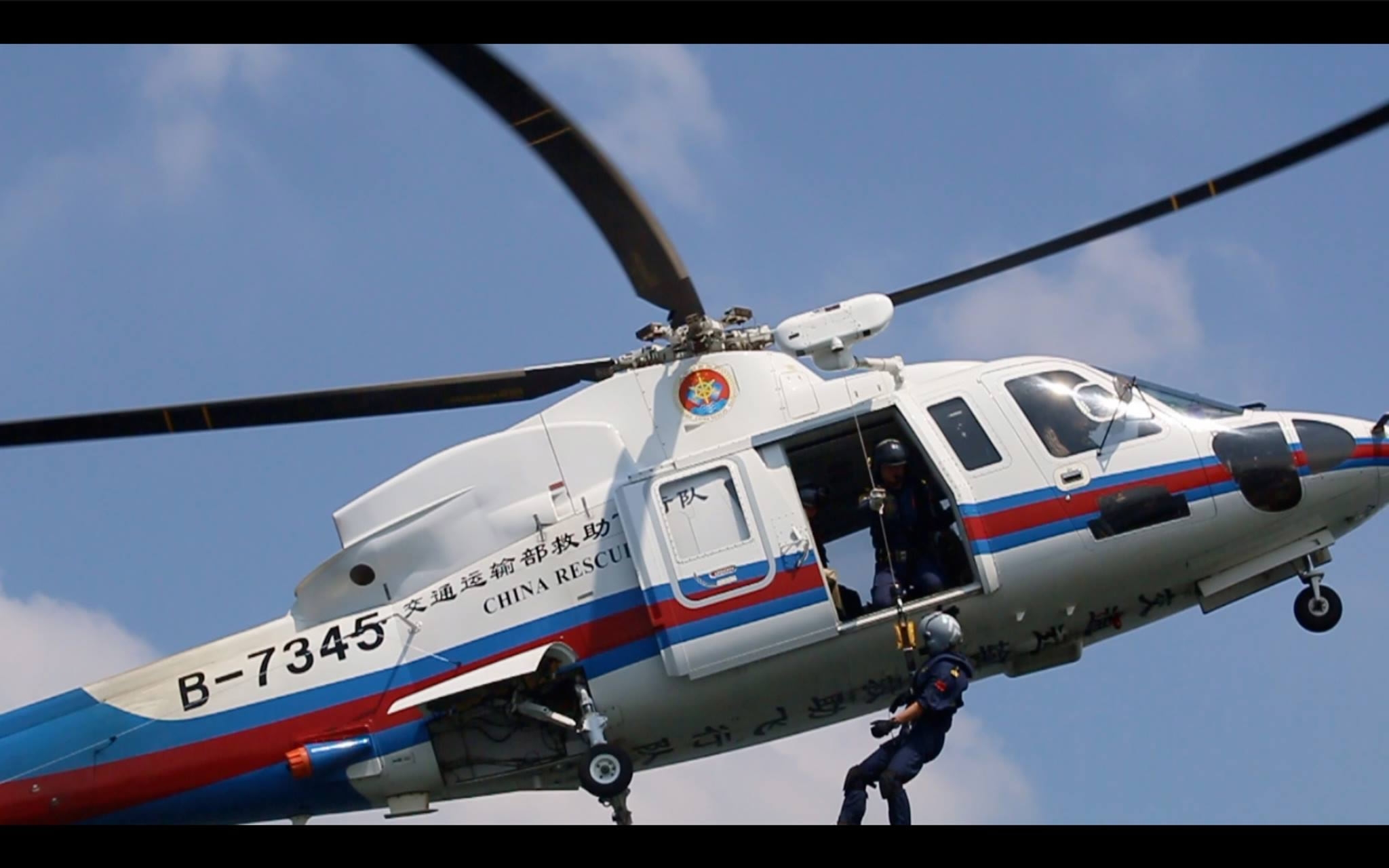
Rescue helicopter with the Donghai (East China Sea) Rescue Bureau of the Ministry of Transport during an offshore rehearsal. /CGTN Photo
Rescue helicopter with the Donghai (East China Sea) Rescue Bureau of the Ministry of Transport during an offshore rehearsal. /CGTN Photo
Commanding the cockpit is no easy task – some would say it is scary and intimidating in equal parts – yet a pilot’s responsibility does not stop at steering the helicopter. Yin is also in charge of what happens aboard the aircraft, which means members of the rescue operations, including the winch operator and the diver, depend on him for their safety.
"Undoubtedly each helicopter rescue operation involves a lot of teamwork, when we put our own lives at risk to lift a shipwrecked sailor or a tourist trapped in a valley. So…there’s a bond connecting us, let’s call it crew brotherhood," Yin said.
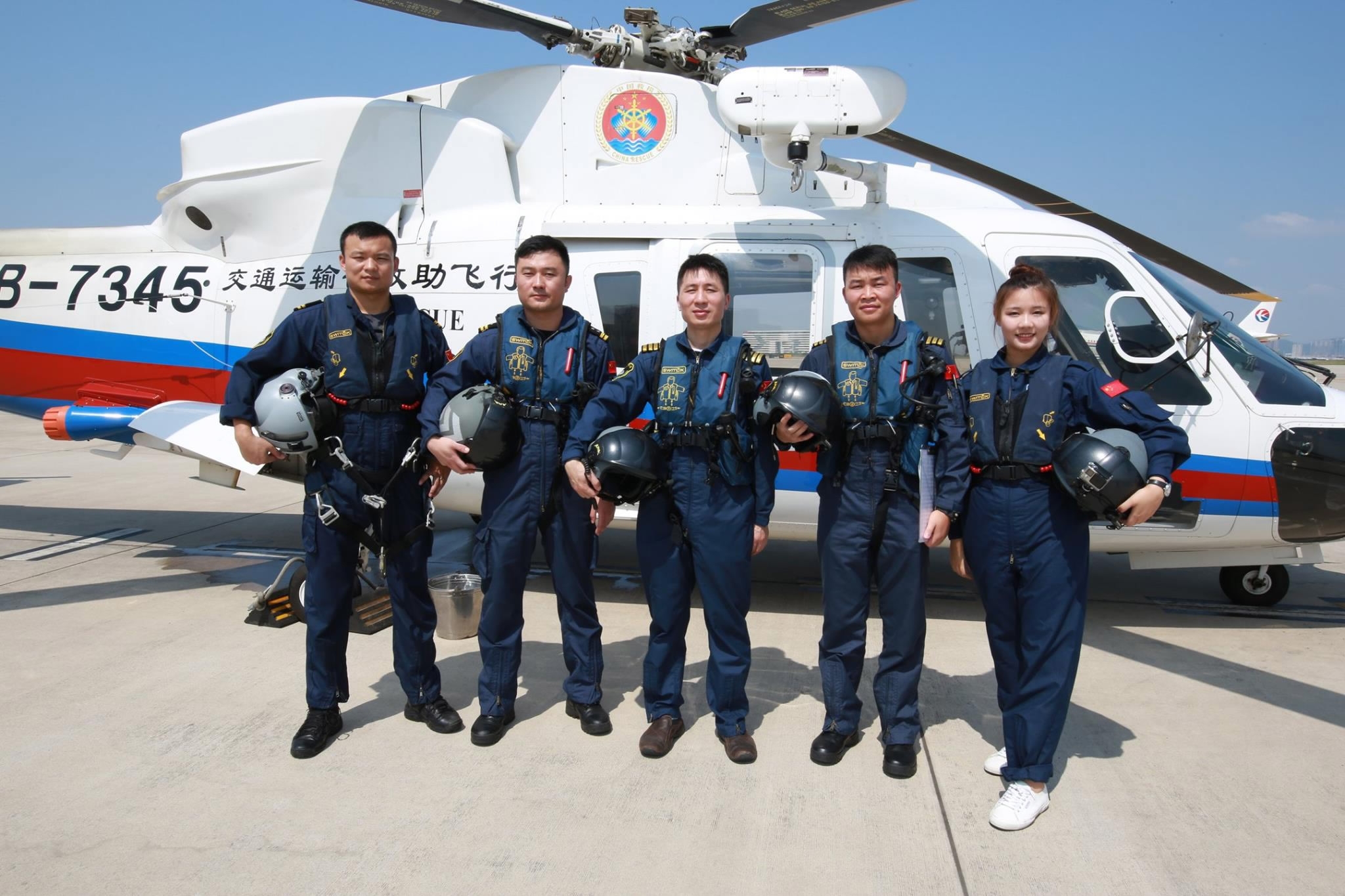
A helicopter rescue crew with the Donghai (East China Sea) Rescue Bureau of the Ministry of Transport, and CGTN reporter. /CGTN Photo
A helicopter rescue crew with the Donghai (East China Sea) Rescue Bureau of the Ministry of Transport, and CGTN reporter. /CGTN Photo
Nothing stops the crew and their missions – not even the traditional design of the chopper. They have cleared away certain fixtures, such as the air conditioning system, from the inside of the aircraft to make space for fuel storage, which in moments of need could help the aircraft cover wider search areas and endure difficult flying conditions.
In the sweltering summer heat, when temperatures rise to over 40 degrees Celsius, it only takes a few minutes before rescuers become drenched in sweat.
But all is for a good cause, and the trade-off pays off in critical times.
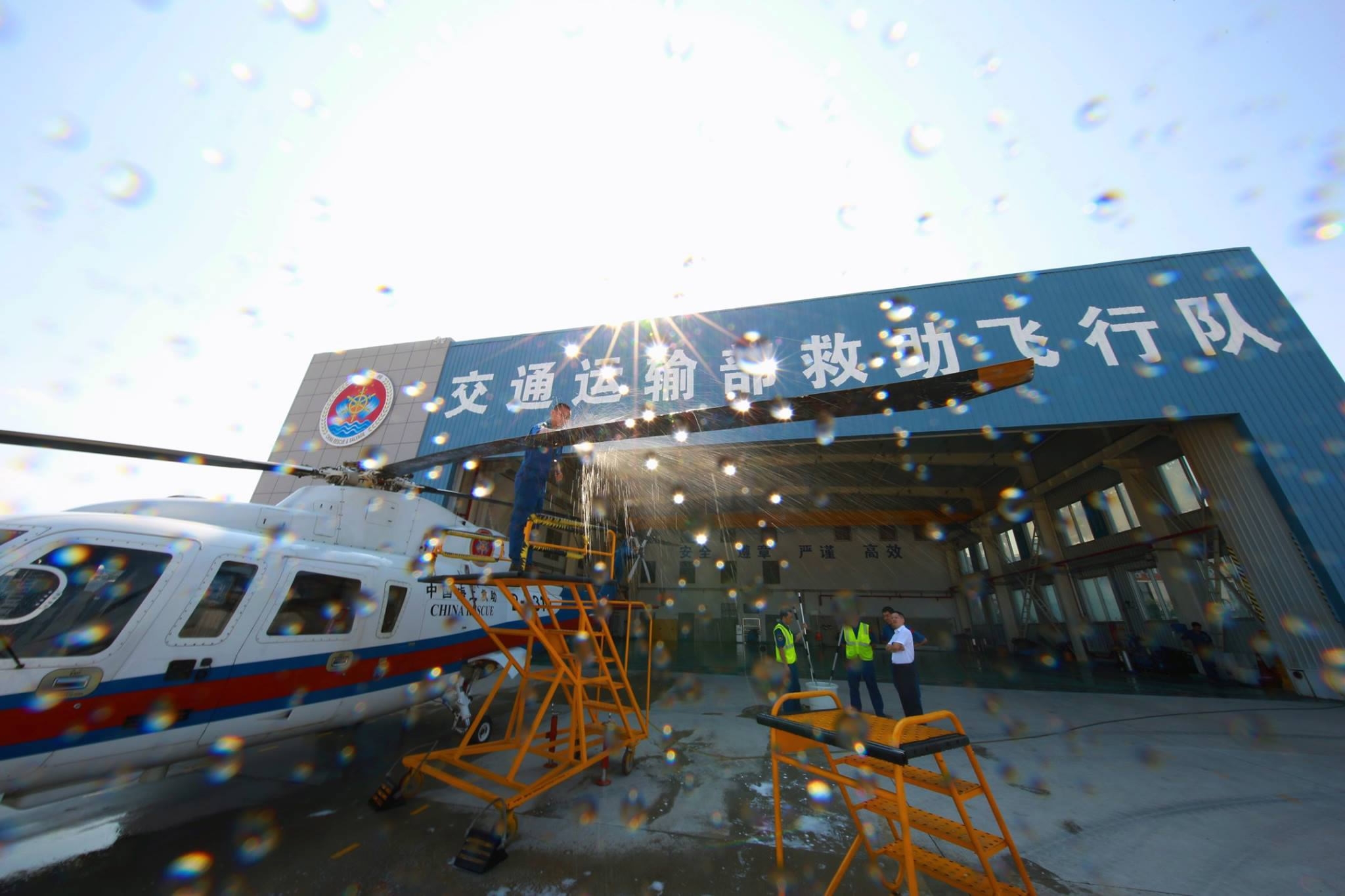
Xiamen Gaoqi Airport. /CGTN Photo
Xiamen Gaoqi Airport. /CGTN Photo
After the devastating 2008 Wenchuan earthquake, the Chinese government mobilized all available rescue forces to the quake-struck area in the southwestern province of Sichuan. Rescue helicopters stationed in Xiamen Gaoqi Airport managed to fly over 2,000 kilometers to join relief work in the remote mountainous region, ferrying food and other supplies and medical teams, and rescuing the injured and stranded.
Having accumulated over 1,000 flight hours and taken part in tens of missions, Yin has seen a variety of rescue scenarios and is on his way to becoming a captain this year.

Yin Pengxiang in the helicopter cabin during an offshore rehearsal. /CGTN Photo
Yin Pengxiang in the helicopter cabin during an offshore rehearsal. /CGTN Photo
But as Yin soars high in his career, he still latches on to the memories of his first rescue operation in 2014.
A fishing boat sailing through the Taiwan Strait had called for help after blood was shed during a knife fight between fishermen.
"I was a novice co-pilot back then. When the injured were lifted to the rear of the helicopter, I saw them lying with their flesh and bones exposed and I smelled blood mixed with the fish smell. It’s an uneasy feeling that I’ll never forget," Yin recalled.
"But, you gradually adapt to it as time goes by," he added.
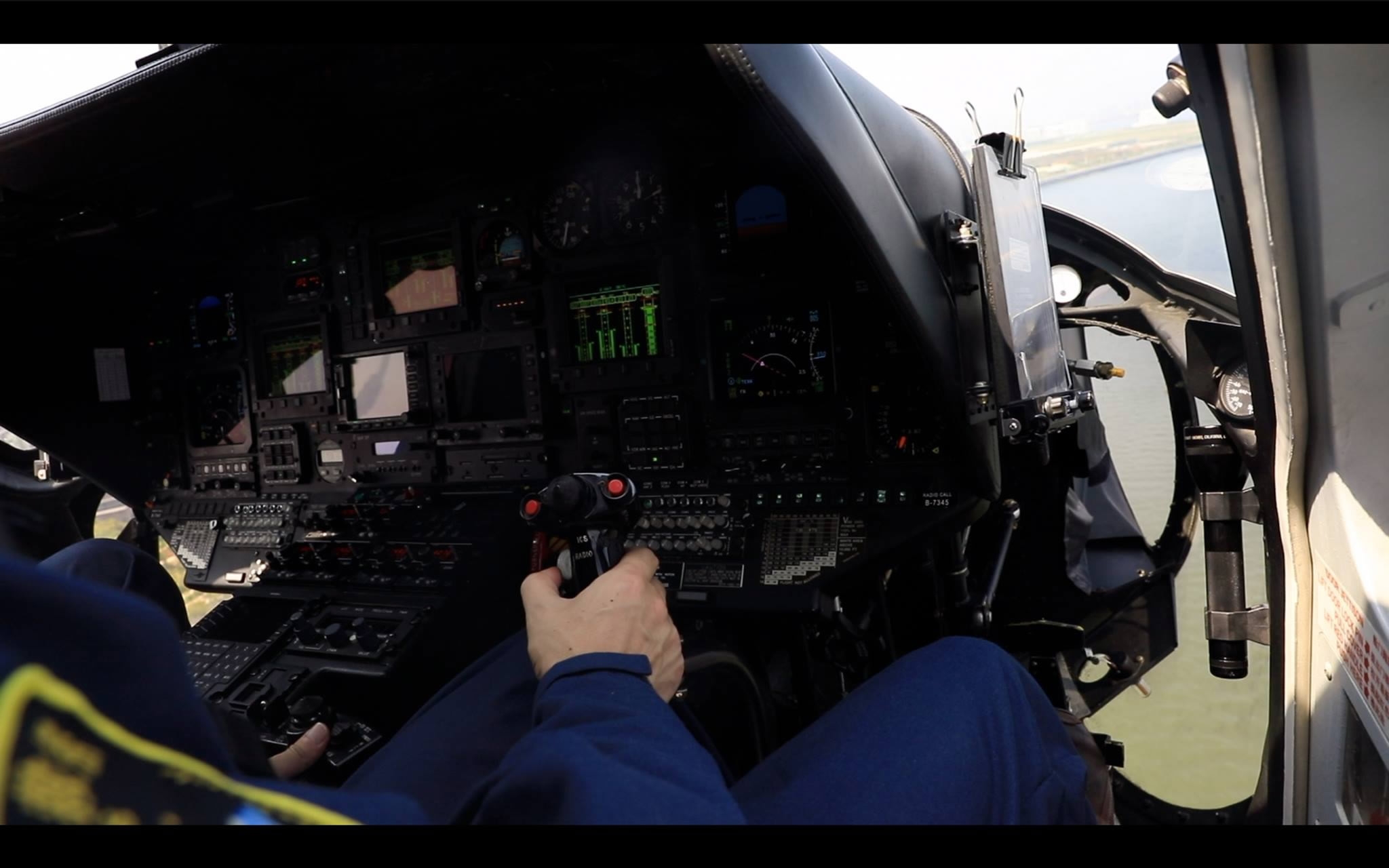
Rescue helicopter with the Donghai (East China Sea) Rescue Bureau of the Ministry of Transport during an offshore rehearsal. /CGTN Photo
Rescue helicopter with the Donghai (East China Sea) Rescue Bureau of the Ministry of Transport during an offshore rehearsal. /CGTN Photo
While the sight of blood and distressed people slowly becomes "normal" to a rescue pilot, the risk of dying while on duty might take Yin a whole lifetime to get used to.
Fatal accidents involving rescue workers have significantly decreased as equipment and technical skills improved over the years, but the possibility of coming face-to-face with death is real, despite being slim.
A total of nine people died in China last year from aviation accidents involving helicopters in civilian operations, according to data by carnoc.com, a leading Chinese aviation web portal.
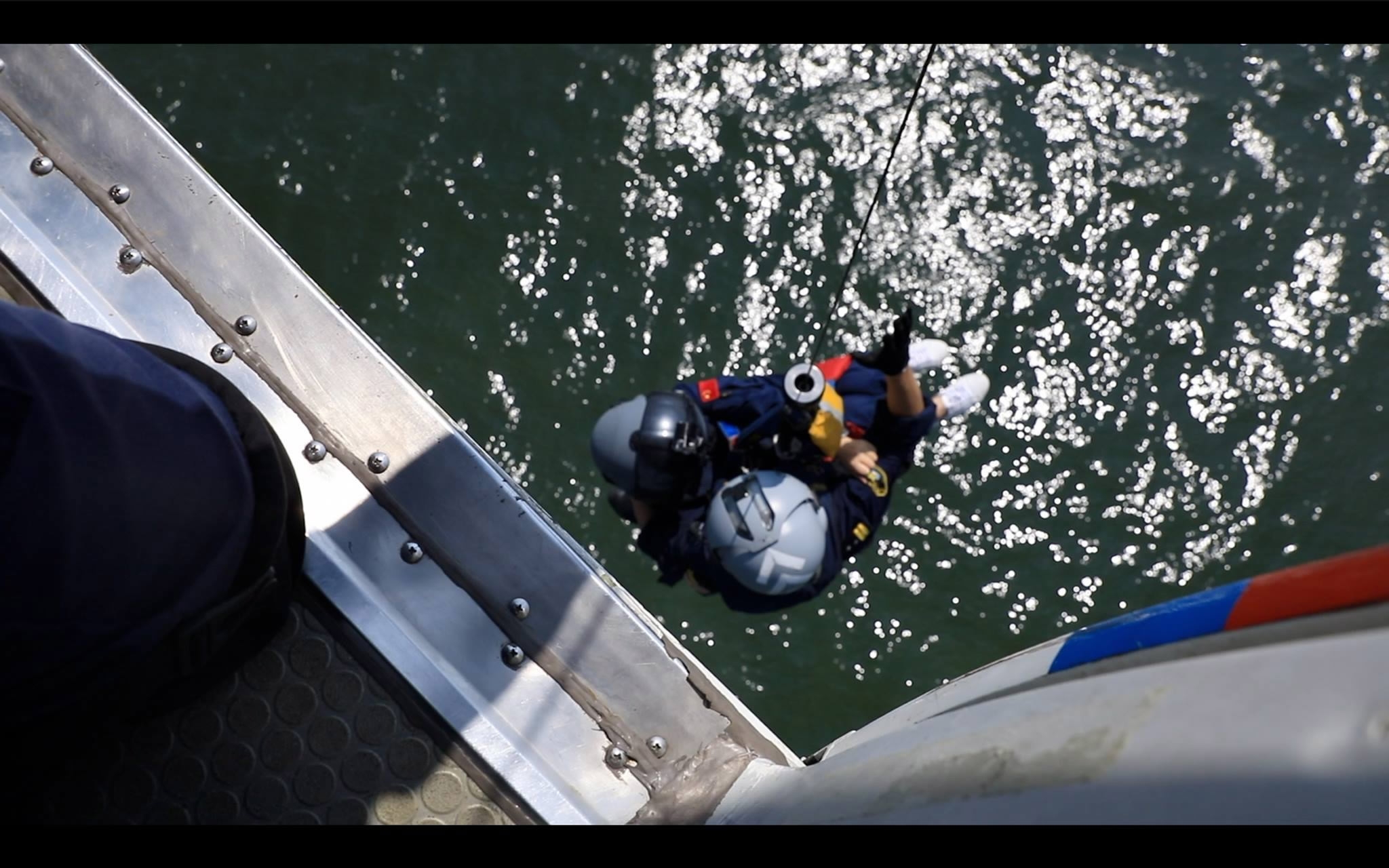
Rescue helicopter with the Donghai (East China Sea) Rescue Bureau of the Ministry of Transport during an offshore rehearsal. /CGTN Photo
Rescue helicopter with the Donghai (East China Sea) Rescue Bureau of the Ministry of Transport during an offshore rehearsal. /CGTN Photo
Yin recollected a tragic helicopter crash last June in a mountainous region in Zhoushan City, east China’s Zhejiang Province, which claimed all four lives – two pilots and two law enforcement officers – aboard a Hafei H410 copter owned by the State Oceanic Administration.
"The aircraft lost contact with the controller on its way back, and the wreck was found on top of the Daqingshan Mountain later that day," he recalled. "The moment we heard about the incident, death felt so real."
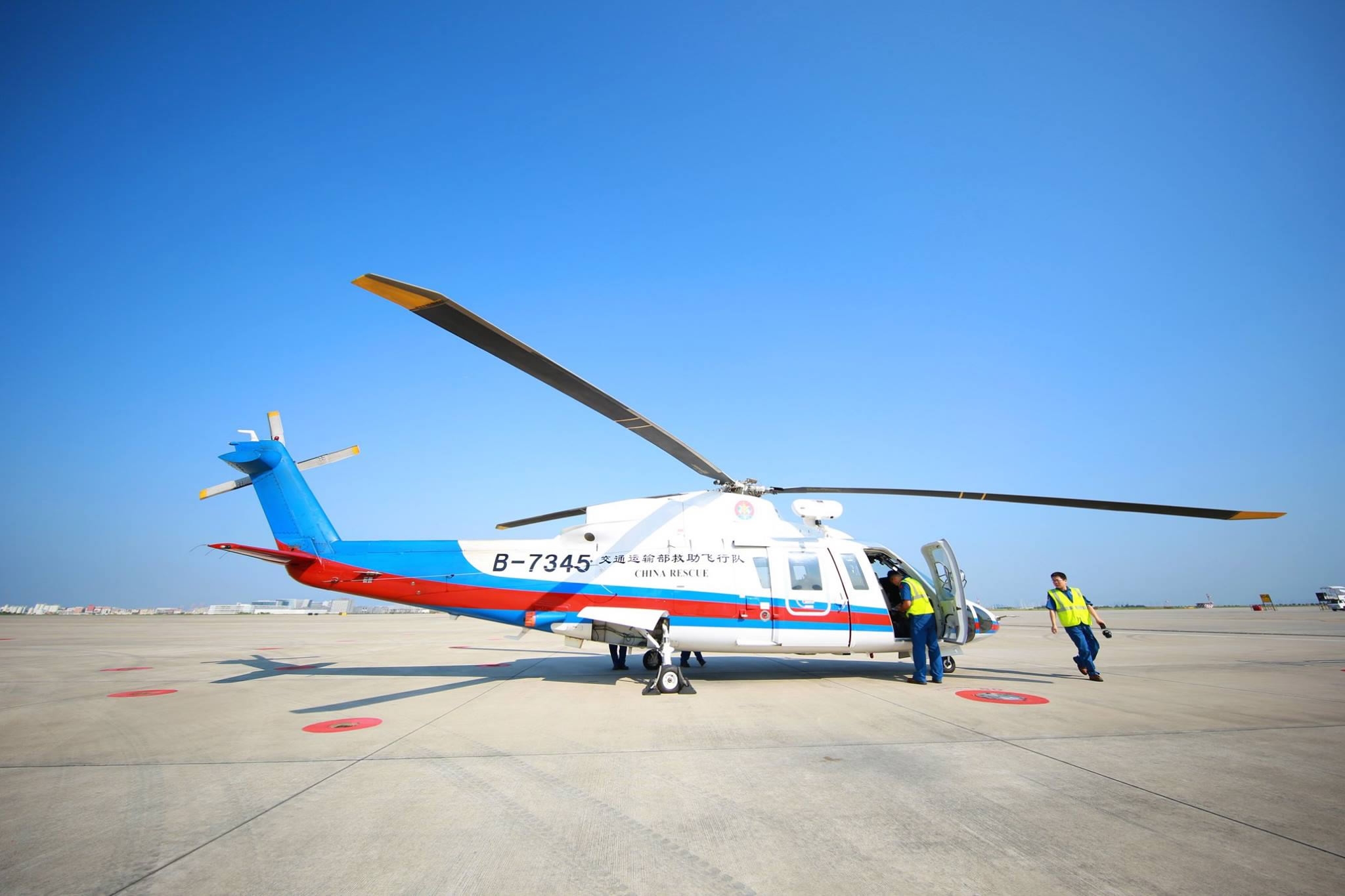
Xiamen Gaoqi Airport. /CGTN Photo
Xiamen Gaoqi Airport. /CGTN Photo
Still, the idea of death lurking around the corner does not deter him from continuing with his rescue missions.
Yin is not sure he qualifies to be a hero, but he does feel proud of what he can accomplish with other members of his rescue squad.
"When someone is rescued, it’s not just them who have been saved. It’s their whole family. You can see people’s gratitude in their eyes," he said.

Yin Pengxiang during an interview with CGTN. /CGTN Photo
Yin Pengxiang during an interview with CGTN. /CGTN Photo
But what about his own family? Yin tries to play down the potential dangers of his job and only mentions the exciting bits of his journeys. "My parents were worried, but they eventually made peace with my dream."
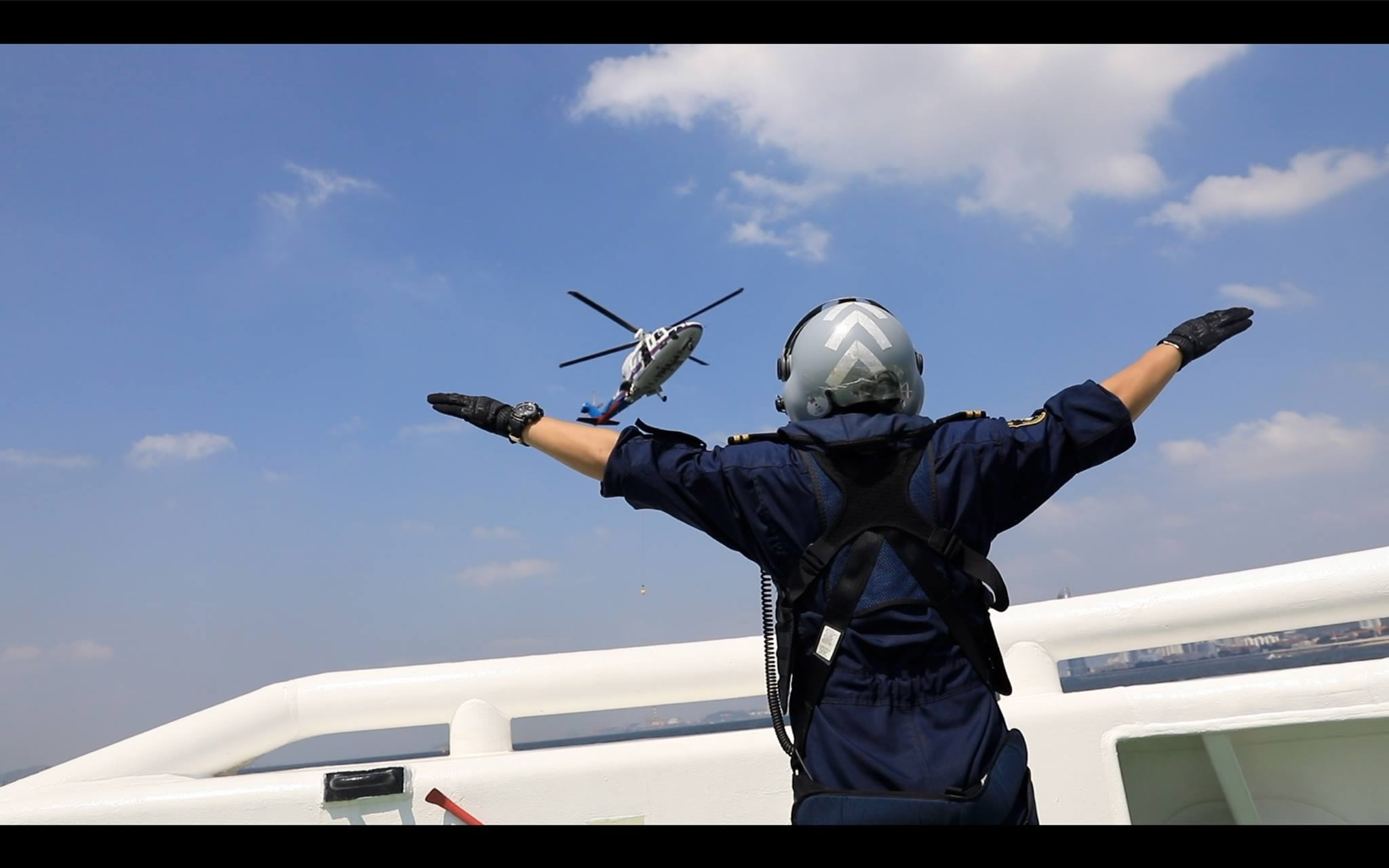
Rescue helicopter with the Donghai (East China Sea) Rescue Bureau of the Ministry of Transport during an offshore rehearsal. /CGTN Photo
Rescue helicopter with the Donghai (East China Sea) Rescue Bureau of the Ministry of Transport during an offshore rehearsal. /CGTN Photo
The young man has no grand plans for his future, except to carry out every rescue operation with utmost care and safety.
"All I wish for my career is to fly safe and sound until my retirement."

